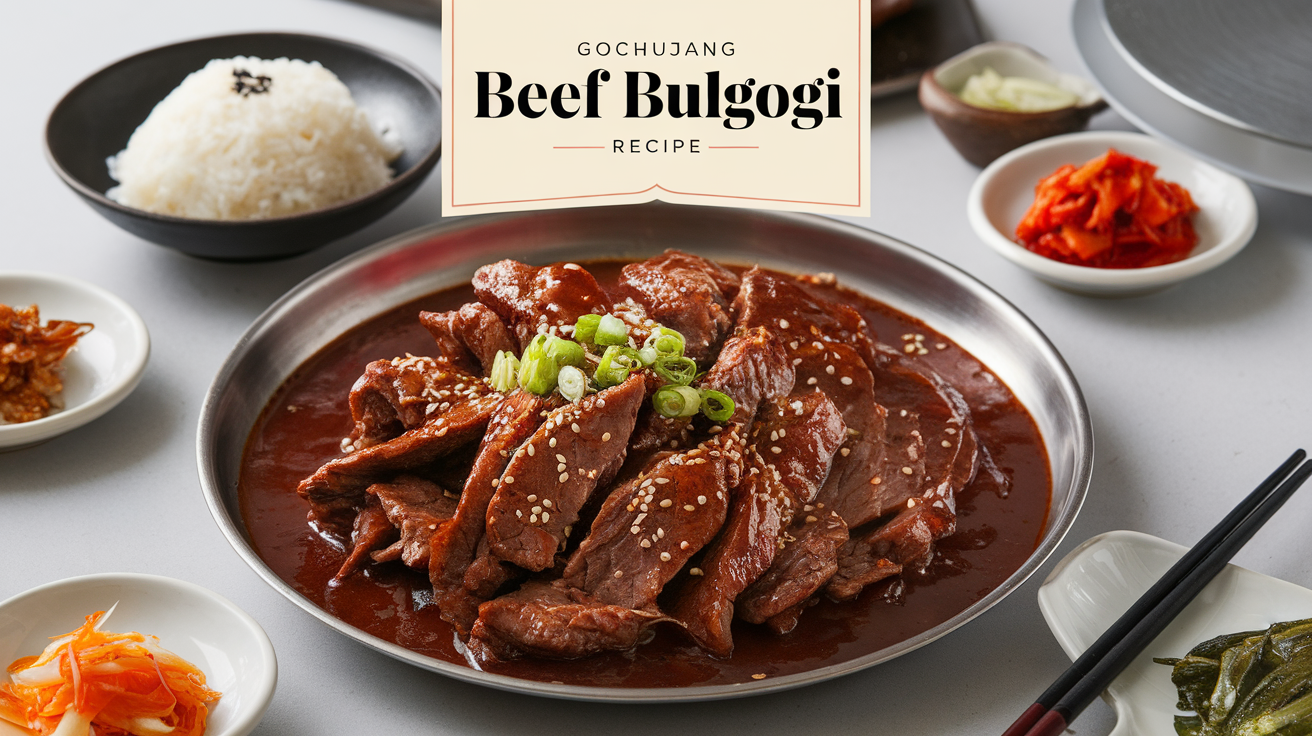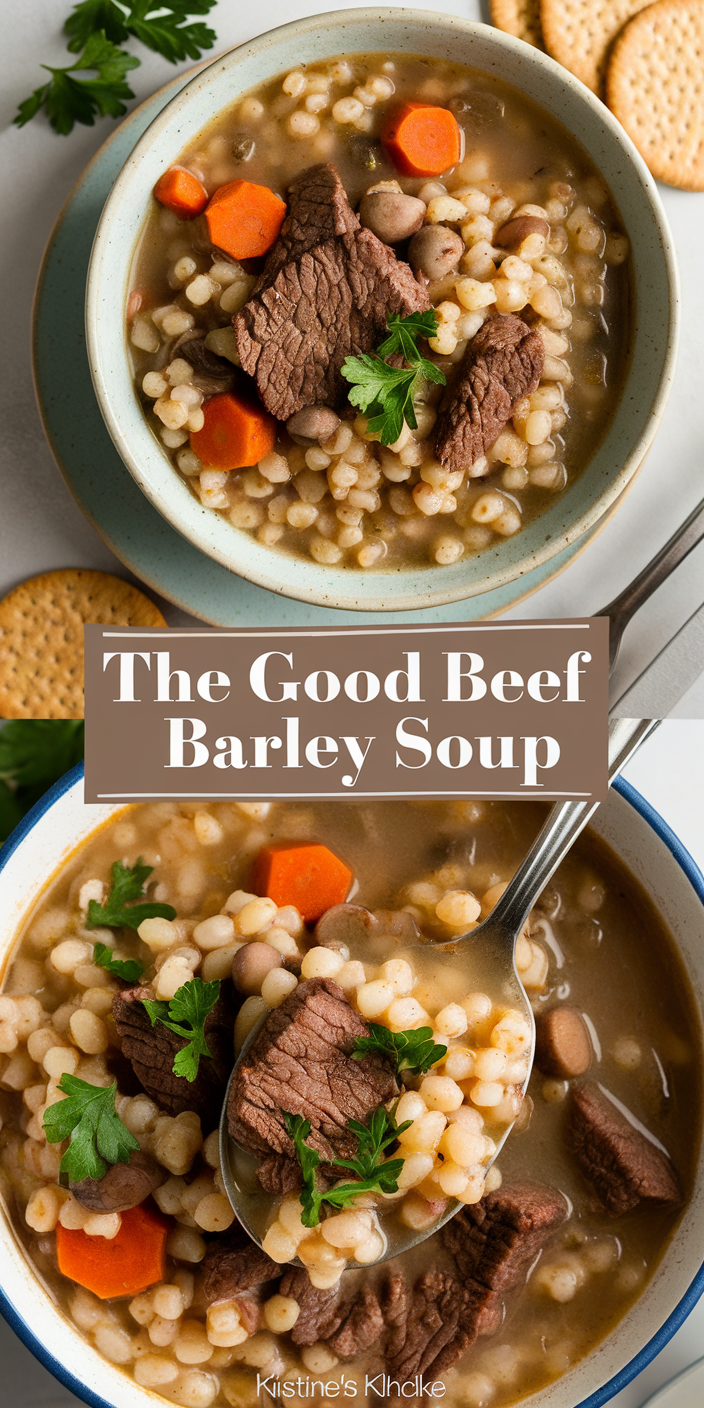Korean cuisine has gained immense popularity worldwide for its bold flavors, rich textures, and unique combinations of ingredients. One dish that stands out in this vibrant culinary landscape is Gochujang Beef Bulgogi, a spicy, savory, and slightly sweet marinated beef dish. If you’ve ever craved a healthy and delicious Korean meal, this recipe is perfect for you. Whether you’re familiar with Korean dishes or trying it for the first time, Gochujang Beef Bulgogi is a recipe that is sure to impress.
In this article, we’ll dive into how to make Gochujang Beef Bulgogi, explore its health benefits, and introduce some creative ways to incorporate Gochujang into other dishes like Gochujang Ramen, Bulgogi Kimbape Spicy Korean Beef. This is more than just a recipe—it’s an opportunity to embrace the flavors of Korea in the comfort of your own kitchen.
What is Gochujang?
Before we dive into the recipe, let’s start with the key ingredient: Gochujang. Gochujang is a staple in Korean cooking, a fermented chili paste made from chili peppers, glutinous rice, fermented soybeans, and salt. This paste has a deep, umami-rich flavor with a balanced level of heat. Its versatility allows it to be used in a variety of dishes, including soups, stews, stir-fries, and even as a condiment. In this recipe, Gochujang Beef will shine, offering the perfect blend of spicy, sweet, and savory flavors.
Gochujang Beef Bulgogi: Ingredients
For the Marinade:
- 1/4 cup Gochujang (Korean red chili paste)
- 2 colheres de sopa de molho de soja
- 1 colher de sopa de óleo de gergelim
- 2 tablespoons brown sugar (or honey)
- 1 tablespoon rice vinegar
- 2 dentes de alho, amassados
- 1 tablespoon ginger, minced
- 1 colher de sopa de sementes de gergelim
- 1 tablespoon water (for dilution)
- 1/2 colher de chá de pimenta-do-reino
- 1 tablespoon onion, finely chopped

For the Beef:
- 1 lb beef sirloin or ribeye, thinly sliced against the grain
- 1 medium onion, sliced
- 1 medium bell pepper, sliced (optional)
- 1 carrot, julienned (optional)
- 2 green onions, chopped (for garnish)
- 1 tablespoon vegetable oil (for cooking)
Instructions: How to Make Gochujang Beef Bulgogi
Step 1: Prepare the Marinade
Start by preparing the marinade, which is the soul of Gochujang Beef. In a mixing bowl, combine Gochujang, soy sauce, sesame oil, brown sugar, rice vinegar, minced garlic, minced ginger, sesame seeds, and black pepper. Stir until the sugar dissolves and everything is well incorporated. For a slightly thinner consistency, add a tablespoon of water to dilute the paste. Taste the marinade and adjust the flavor to your liking—if you prefer more sweetness, add a little more sugar; if you like it spicier, feel free to add extra Gochujang.
Step 2: Marinate the Beef
Place the thinly sliced beef in a shallow dish or a resealable plastic bag. Pour the marinade over the beef, making sure the meat is well coated. Seal the dish or bag and refrigerate for at least 30 minutes—overnight marination will result in deeper flavors, but a quick marinate will work as well.
Step 3: Sauté the Beef
Heat a large skillet or wok over medium-high heat and add the vegetable oil. Once the oil is hot, add the marinated beef and cook for 5-7 minutes, stirring occasionally, until the beef is fully cooked and caramelized on the edges. If you’re adding vegetables like onions, bell peppers, or carrots, throw them in at this stage and sauté until tender.

Step 4: Garnish and Serve
Once the beef is cooked, transfer it to a serving dish and garnish with chopped green onions and a sprinkle of sesame seeds. You can enjoy Gochujang Beef Bulgogi with steamed rice, on top of Gochujang Ramen, or as part of a healthy Korean-inspired meal.
Health Benefits of Gochujang Beef Bulgogi
The beauty of Gochujang Beef lies in its balance of bold flavors and the health benefits it offers. Here are a few reasons why this dish can be part of a healthy meal plan:
- Protein-Rich Beef: The beef in Bulgogi provides a rich source of high-quality protein, which is essential for muscle growth, tissue repair, and immune function.
- Nutrient-Rich Vegetables: If you choose to add vegetables like carrots, onions, or bell peppers, you’re increasing the vitamin and mineral content of the dish. These vegetables provide antioxidants and fiber, which contribute to digestive health.
- Gochujang Benefits: The fermented nature of Gochujang offers gut health benefits. The fermentation process promotes the growth of probiotics, which support a healthy digestive system.
- O Óleo De Gergelim: The sesame oil used in the marinade provides healthy fats, including omega-3 fatty acids, which help reduce inflammation and support heart health.
- Baixa em Calorias: This dish is low in calories compared to other beef dishes, making it a great option for those looking to eat healthily without compromising on flavor.
Creative Ways to Use Gochujang
Gochujang is not just limited to Gochujang Beef Bulgogi—its versatility allows it to be incorporated into a wide range of dishes. Here are some other creative ways to use Gochujang in your cooking:

1. Gochujang Ramen
For a quick and spicy meal, try adding Gochujang to your homemade ramen. The rich, spicy paste enhances the flavor of the broth, making it a comforting and savory dish. Simply add a tablespoon of Gochujang to your ramen broth along with soy sauce, garlic, and ginger for a deliciously fiery twist.
2. Bulgogi Kimbap
Kimbap, often referred to as Korean sushi rolls, can be elevated by incorporating Gochujang Beef Bulgogi as a filling. Spread a thin layer of Gochujang on the rice, place your beef Bulgogi, and roll it up in a seaweed sheet. Slice into bite-sized pieces for a delicious, portable snack.
3. Spicy Korean Beef
For a quick stir-fry, Spicy Korean Beef can be made by marinating thinly sliced beef in Gochujang and other seasonings before stir-frying with vegetables like broccoli or snap peas. This dish can be served with steamed rice or over a bed of sautéed greens.
4. Gochujang Pasta
For a fusion dish, try using Gochujang in a pasta sauce. Combine it with garlic, soy sauce, and a bit of honey to create a spicy-sweet sauce for pasta. Add sautéed mushrooms, spinach, or even Tofu Cauliflower for a complete meal. O Gochujang Pasta will have an irresistible kick that’s perfect for spice lovers.
5. Tofu Cauliflower Stir-Fry
For a vegetarian version of Gochujang Beef Bulgogi, you can substitute tofu and cauliflower. Marinate the tofu in Gochujang and soy sauce, and stir-fry it with cauliflower, bell peppers, and onions. This makes for a healthy and delicious alternative that is just as satisfying.
Gochujang Beef Bulgogi: A Perfect Meal for Any Occasion
Whether you’re preparing a weeknight dinner, meal prepping for the week, or hosting a Korean-themed dinner party, Gochujang Beef Bulgogi is a fantastic choice. It’s easy to make, versatile, and packed with flavor. Plus, it pairs wonderfully with a variety of dishes, from Gochujang Ramen para Bulgogi Kimbap, making it an ideal centerpiece for any Korean-inspired meal.
So, what are you waiting for? Gather your ingredients, get cooking, and experience the bold and delicious flavors of Korea with this Healthy Korean Beef recipe. You’ll be glad you did!
Conclusão
In conclusion, Gochujang Beef Bulgogi is a dish that captures the essence of Korean cuisine—flavorful, healthy, and satisfying. With its rich marinade of Gochujang, garlic, ginger, and sesame oil, the beef becomes tender and full of deep, umami flavors. Whether enjoyed on its own or as part of a larger meal featuring dishes like Gochujang Ramen ou Bulgogi Kimbap, this recipe is sure to become a favorite in your culinary repertoire. Give it a try, and indulge in the vibrant and healthy world of Gochujang Recipes hoje!


